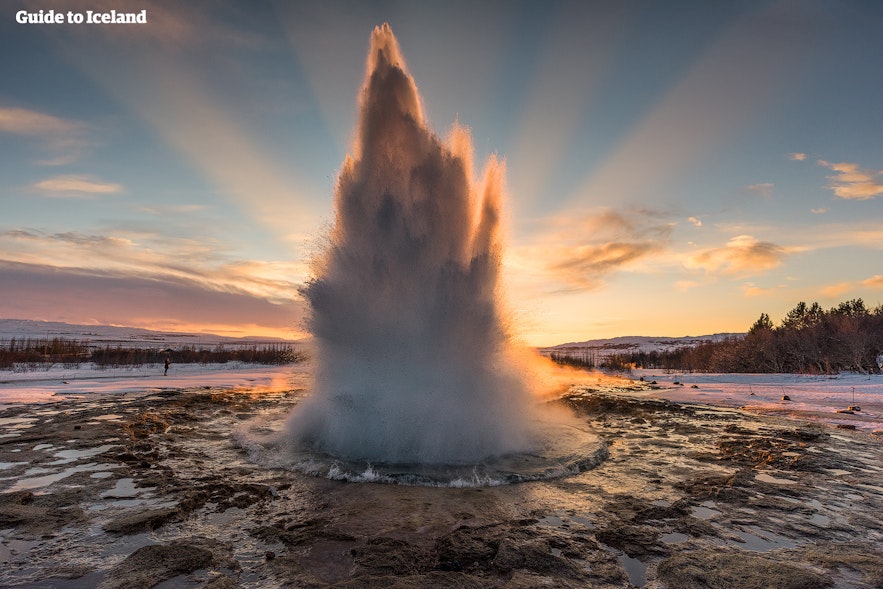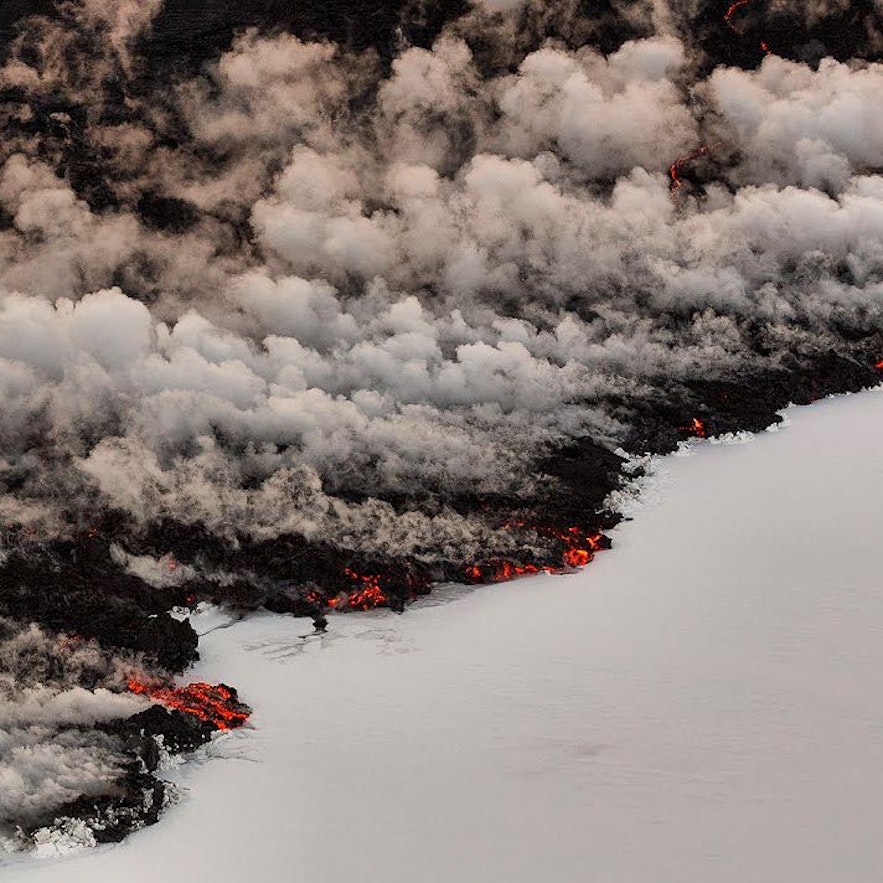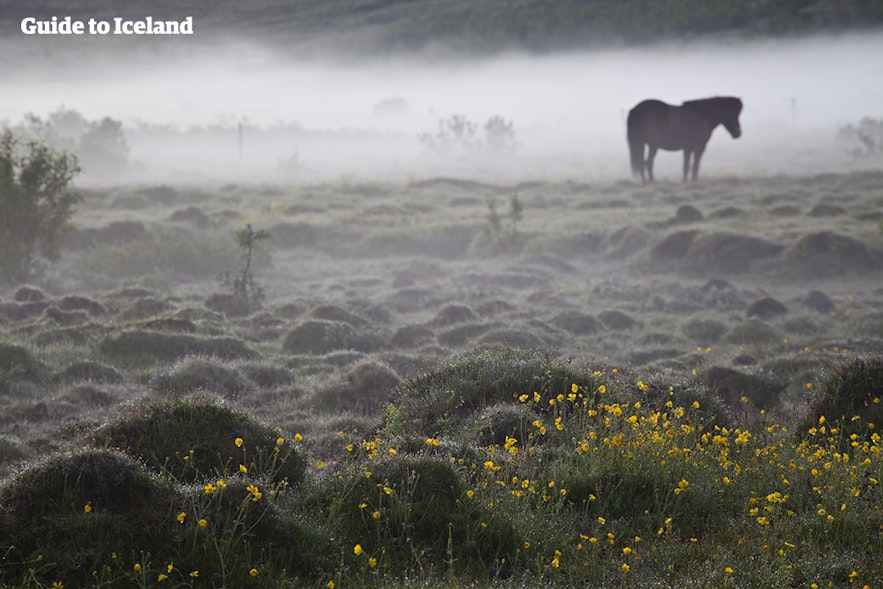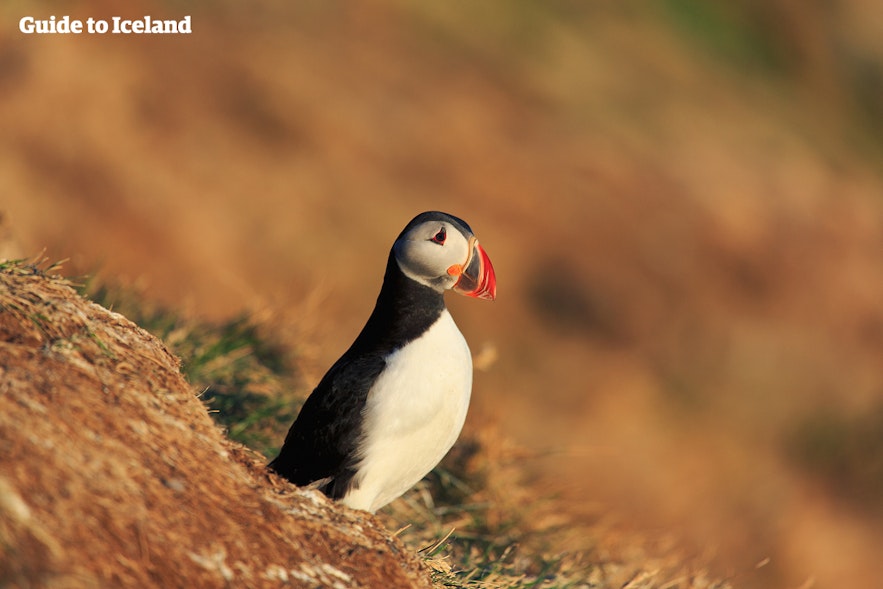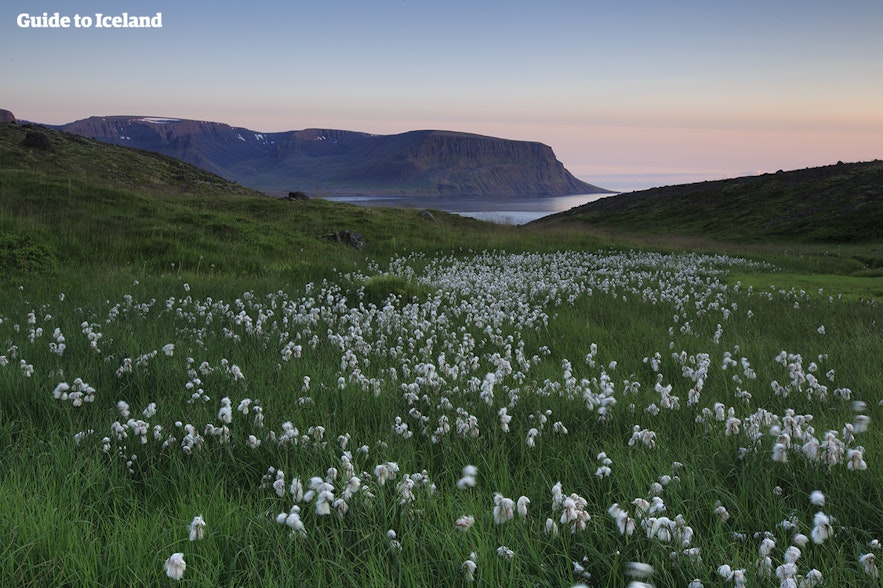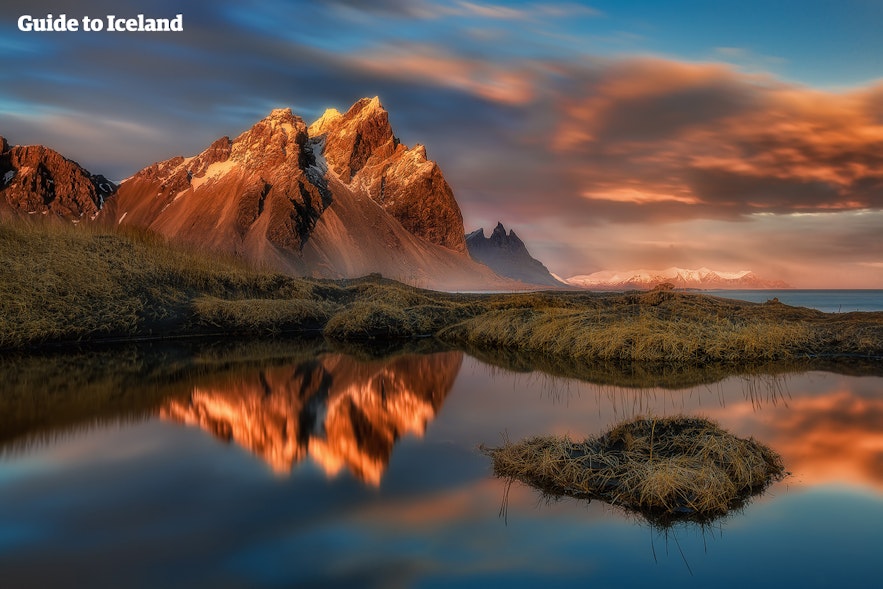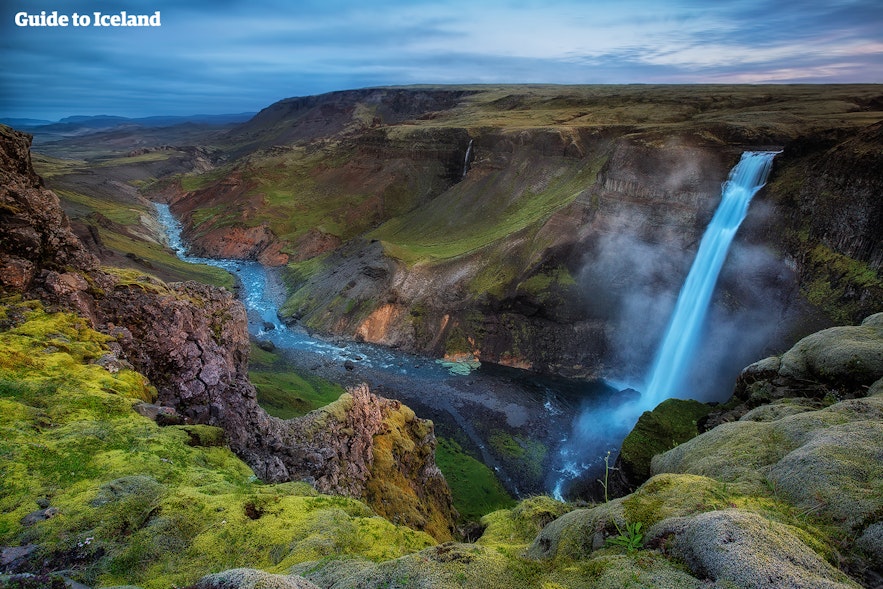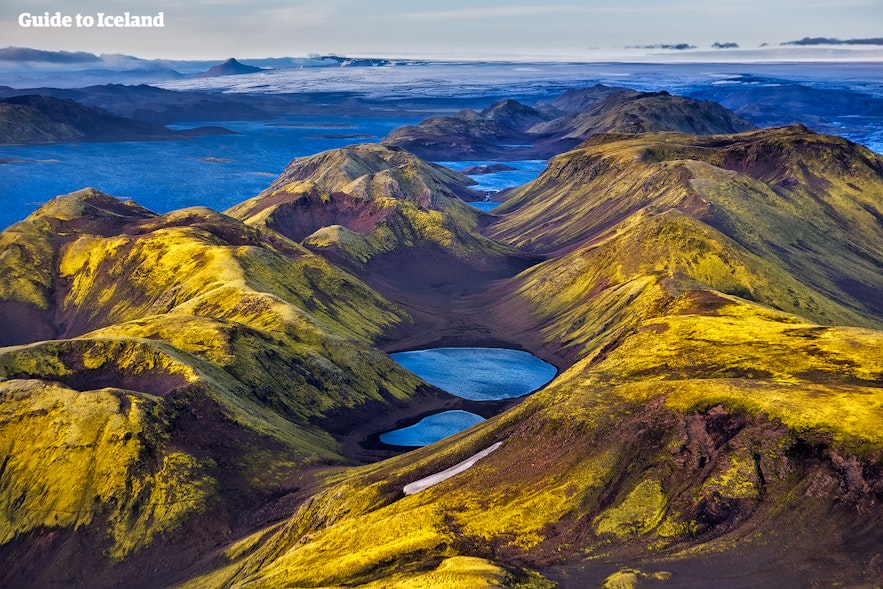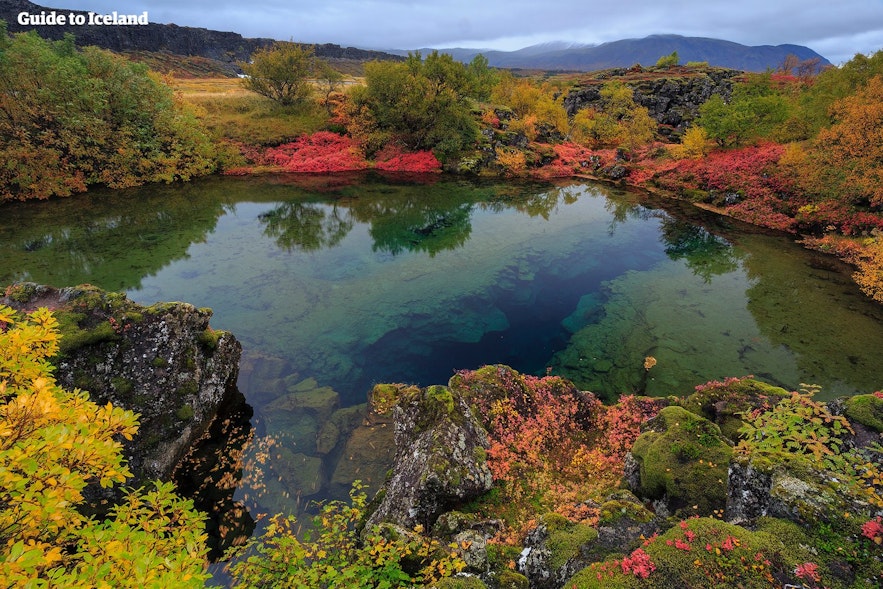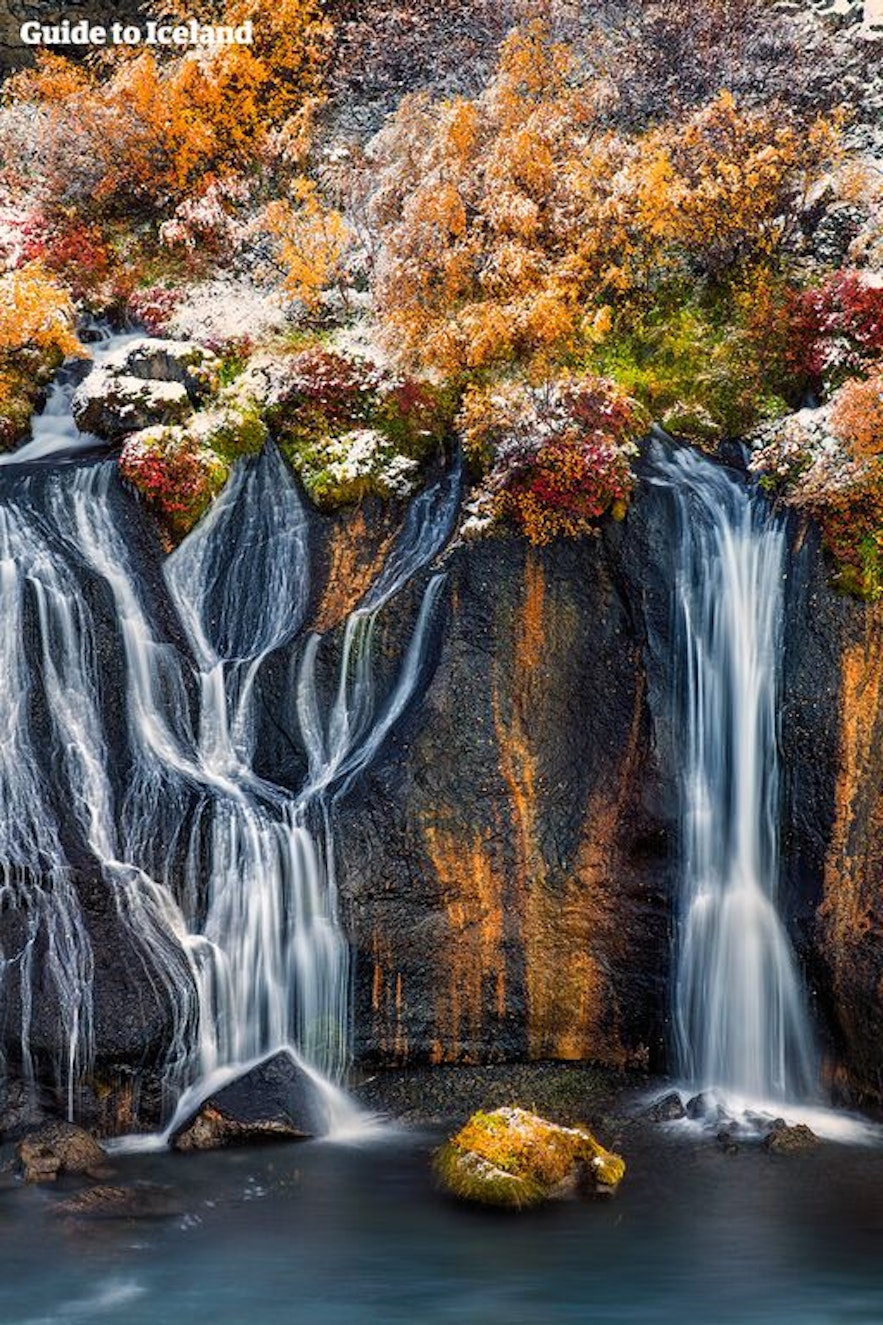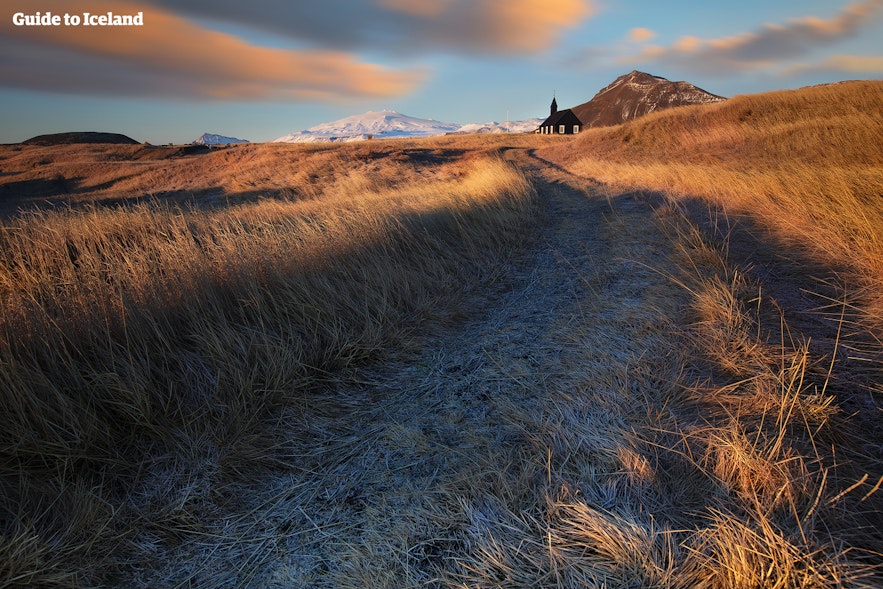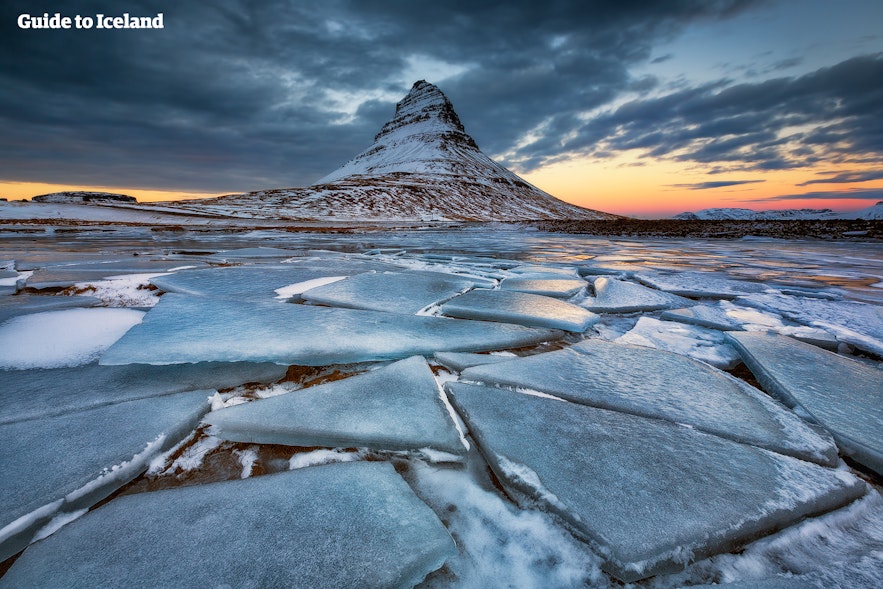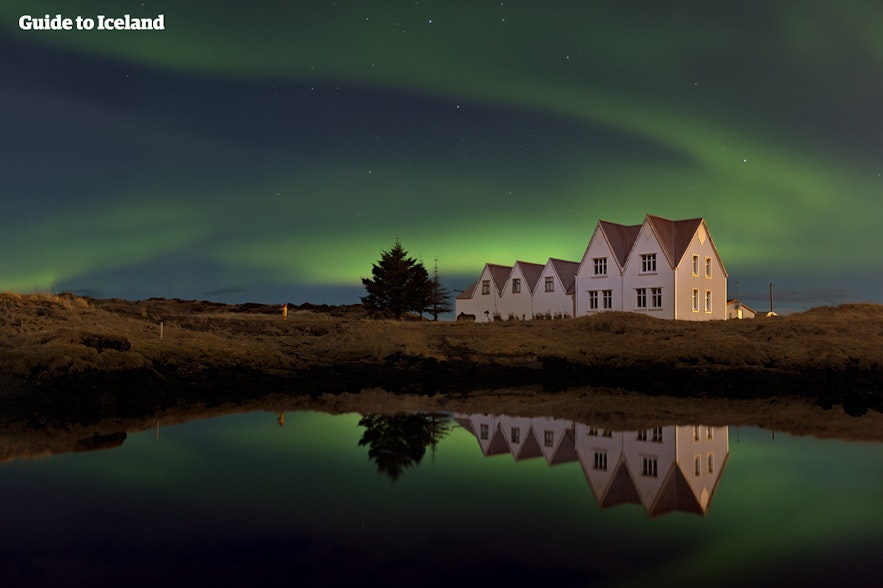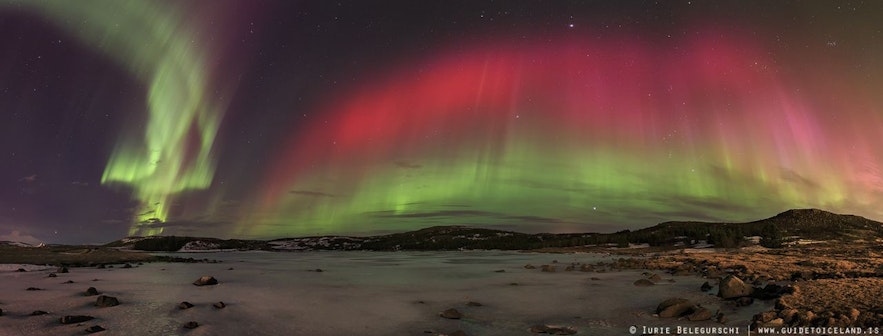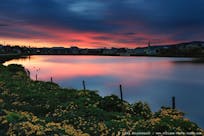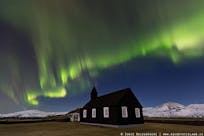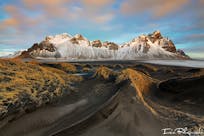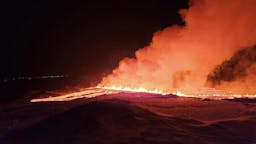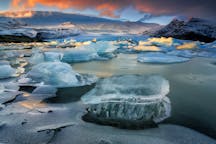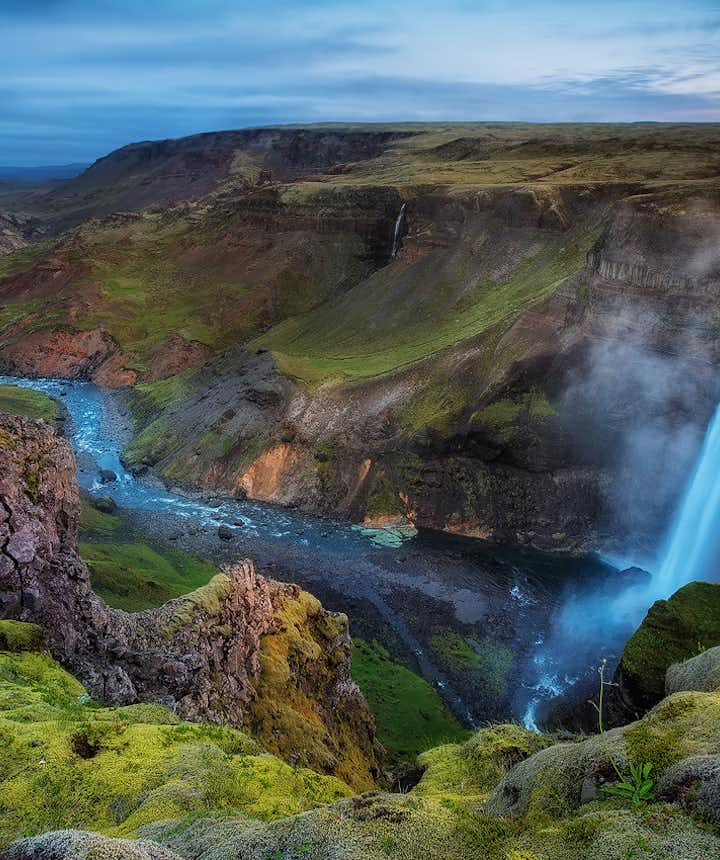
Iceland's Weather, Climate, and Temperature Year-Round
- There's No Wrong Time to Visit Iceland!
- What's the Weather Like in Iceland?
- Understanding Iceland's Climate
- Reykjavik Weather
- North Iceland Weather
- Iceland Westfjords Weather
- What's the Best Season to Visit Iceland?
- Spring Weather in Iceland
- Information About Iceland Spring Weather by Month (And More)
- Summer Weather in Iceland - The Most Popular Season
- Information About Iceland Summer Weather by Month (And More)
- Fall Weather in Iceland
- Information About Iceland Fall Weather by Month (And More)
- Winter Weather in Iceland
- Information About Iceland Winter Weather by Month (And More)
- The Average Temperature in Iceland by Month
- The Northern Lights
Learn everything there is to know about the weather in Iceland. As an island of extremes, the weather is no exception. Find out the average temperature by month, the weather during each season, how the weather differs in different areas, how it affects your ability to see the northern lights, and other useful info for planning your trip.
One of the first questions people ask when considering a trip to Iceland is, "When is the best time to visit Iceland?" It's hard to answer because Iceland is so varied in nature and wildlife and the weather in Iceland is so unpredictable. Your experience when visiting Iceland can be completely different depending on what time of year you visit.
The best way to catch the northern lights is to get out of the city and into the countryside, so hiring a car is highly recommended. You also have the option of renting a cottage in the Icelandic countryside, far away from city lights and distractions, giving you a great opportunity to see the aurora or enjoy the midnight sun in the summer. We also have a wide selection of northern lights tours, so it's useful to know the weather before going out aurora hunting!
- See also: What to Do and Where to Go in Iceland
- See also: What to Pack for Travel in Iceland
There's No Wrong Time to Visit Iceland!
It's true! While the weather and seasons in Iceland vary significantly throughout the year, Iceland is one of the most exciting countries to visit for nature lovers. There is fantastic natural beauty to take in all 12 months of the year. Summer will bring the midnight sun, and winter will bring the gorgeous northern lights.
Some experiences available in December aren't available in June - and vice versa. In June, you can experience the midnight sun, see puffins, enjoy generally warmer temperatures, go camping, and more.
In contrast, December brings out the northern lights, ice cave tours, the magical twinkly lights of the Iceland Christmas season, and more. No one season holds all the activities Iceland has to offer. There is truly something for everyone in every season.
Visiting Iceland during the down season is a better time for encountering fewer crowds. Summer is typically the busiest season, but you can still find wide-open spaces to explore, even during this period. The activities are so nature-focused that you can always find a way to avoid the crowds.
What's the Weather Like in Iceland?
Iceland does have four seasons, although sometimes it doesn't feel that way. The weather changes all the time! This means Iceland's weather year-round is prone to many changes and surprises.
You'll probably hear the joke "if you don't like the weather, wait five minutes!" when you're in Iceland. Many people think that Iceland is constantly frozen, but that is not the case.
Understanding Iceland's Climate
Iceland enjoys a much milder climate than its name suggests. This is partly due to the Gulf Stream that flows along the west and south of Iceland, bringing warmth from the Caribbean.
This warmth also means that the mild Atlantic air gets mixed with the cold Arctic air coming from the north and causes sudden and frequent weather changes.
Therefore, there is a lot of wind and stormy weather. Precipitation is also high, while the southern part of the country usually gets more rainfall than the north.
Another reason for the warmth in Iceland is that Iceland sits on top of one of the earth's hot spots.
Iceland is a country of incredible geothermal activity. It's full of hot springs, geysers, mud pools, volcanoes, and occasional earthquakes.
The island is one of the few places in the world where you can see two tectonic plates meet on the earth's surface (normally, they would meet under the sea).
Iceland is divided by the Eurasian tectonic plate and the North American tectonic plate. The divide runs through the country's middle and is visible at Thingvellir National Park. You can even go diving or snorkeling between the two continents at this point. These tectonic movements will split Iceland in two in a few billion years. But until then, let's make the most of it!
Don't be put off by volcanic activity or earthquakes. When a volcano starts erupting, it tends to become an attraction instead of a reason for people to flee. Earthquakes are generally minor and very infrequent.
Reykjavik Weather
The weather in Reykjavik averages around 33-35 F (1-2 C) in wintertime and about 54 F (12 C) in summer.
In winter, the temperature in Reykjavik can drop as low as 14 F (-10 C) and rise as high as 50 F (10 C). In summer, it can drop as low as 44 F (7 C) and rise as high as 77 F (25 C).
Reykjavik is in the southwest part of the country, and the further north you go, the more different the temperature will be.
North Iceland Weather
The largest town in North Iceland, Akureyri, generally receives warmer days during summer (though still averaging lower than Reykjavik, around 52 F (11 C), but colder days in winter (about 32 F or 0 C), with more consistent levels of snow.
Iceland Westfjords Weather
The town of Isafjordur, in the Icelandic Westfjords, can sometimes be inaccessible during the winter due to heavy snowfall. This isolation is due to weather occurrences in multiple other towns and villages in the Westfjords and the north and east of Iceland.
Surprisingly, Icelandic winters are not as cold as those in Canada, Russia, or even New York or Baltic countries.
Summers can get warm, but there are rarely any hot days. The highest temperature recorded in Iceland was 86.9 F (30.5 C) in 1939, in the east of the country.
The temperature is mild throughout the year, and the change between summer and winter temperatures is not as drastic as in New England, for example.
This 'mild' weather, however, is entirely unpredictable.
You can wake up to a beautiful sunny day, begin getting dressed, and by the time you've finished, discover there's a raging blizzard outside. Or you can be driving in a valley with nothing but clear skies, crest a hill, and enter a scene of fog and rain.
There are also drastic weather differences depending on if you are on barren plains, in a sheltered valley, or standing on the top of a glacier.
In addition to that, it may feel colder than the temperature indicates due to the wind chill factor. On warm days you may feel hotter as the air tends to be dry.
Icelanders are used to this constant change in the weather, and if you book a tour that gets canceled due to weather, you'll generally receive a full refund or be scheduled for another day.
What's the Best Season to Visit Iceland?
All seasons in Iceland have something great about them.
Summer is the country's high season and the most popular time to come to Iceland. Iceland's summer weather is milder, the days are longer, and it's a truly spectacular time to visit. If you're coming to Iceland for the first time, we recommend doing so in the summertime.
If you are coming to Iceland for the second or third time, we'd recommend checking out one of the other seasons.
The prices will be lower for your accommodation (except for Christmas and New Year's Eve!) as it is the low season, but you will see a great contrast to the summer landscapes.
Some attractions are only available during the winter, such as the elusive northern lights and the spectacular ice caves in Iceland's many glaciers.
You could also find yourself on a crazy adventure that includes super jeeps and snow blizzards and come home with slightly more fun and exciting travel stories than usual.
And nothing beats New Year's Eve in Reykjavik.
For updated information about Iceland's climate and weather conditions, visit the Icelandic Meteorological Office website.
Just remember that the weather in Iceland can be highly unpredictable (even in the summer), so all forecasts should be considered best guesses.
Spring Weather in Iceland
While spring comes to Iceland in April and May, Icelanders celebrate the first day of summer on the first Thursday after April 18. It's the 'official' first day of summer and a public holiday. It's also not that uncommon for snow to fall on this day.
Though this is considered the first summer day, it would be more accurate to say it's the first spring day.
Iceland can sometimes have snowfall during April and May, but generally, this is when the snow melts in the mountains and highlands, allowing the flowers of Reykjavik and its coastline to start blooming.
Spring is also when migrating birds appear in Iceland, such as the famous puffins. The first puffins return in April and stay until September.
Another bird, the golden plover, is supposed to bring spring along with it. You can see the first golden plovers towards the end of March.
- See also: Icelandic Birdlife
Springtime weather in Reykjavik can be anything from snow, sleet, and rain, to bright sunny days. Iceland's average temperature in spring is between 32-50 F (0-10 C).
Springtime can be wet in the southern part of the country but drier (and colder) in North Iceland.
The Icelandic Highlands can be colder than the coastline and are closed for traffic during the spring. The colors of nature will start to emerge at this time. The grass may not be very tall or green yet, but tree leaves will be close to returning.
Spring flowers such as crocus and Easter lilies will begin poking their heads out of people's gardens. You might even see some spring flowers blossom on tree branches.
Generally, the end of winter lifts people's spirits, and there's excitement in the air for the summer that's around the corner.
Spring is an excellent time for tourists to come to Iceland. You can still catch the northern lights, the weather is mild, and the high season hasn't started yet, so fewer tourists are around and lower prices.
It should also be easier for you to find accommodation and tour availability.
Information About Iceland Spring Weather by Month (And More)
- Iceland Weather in March
- Iceland Weather in April
- Iceland Weather in May
- Iceland in Spring - The Ultimate Travel Guide
Summer Weather in Iceland - The Most Popular Season
Iceland's summer starts in late May or early June and lasts through August. It's the most popular time for people to visit Iceland.
The midnight sun appears, meaning the days are incredibly long. The longest days last close to 21 hours until the sun sets. Therefore, if you rent a car in Iceland, it gives you the freedom to explore the country around the clock!
The days get longer and longer until the solstice falls around June 21.
The days get shorter after the summer solstice, but only by a minute or two each day. The sunsets turn into sunrises in spectacular shows of color that can last for hours.
Iceland is a paradise for photographers who want to capture nature during the 'golden hour.'
- See also: Photography in Iceland
These long days with balmy Iceland summer temperatures are convenient for travelers; you won't ever get lost in the dark or need to reach a destination before night falls.
There is no complete darkness! Don't worry, you'll still be able to sleep. Just use blackout curtains or pack an eye mask to wear to bed.
Most tours are available in the summertime. You'll be able to see many locations during the long days, including mountains, glaciers, volcanoes, and waterfalls. These will provide you with excellent color contrasts.
The best weather in Iceland occurs in the summer, however, it can still be unpredictable.
Iceland's temperatures in summer can be as low as 41 F (5 C) but as warm as 77 F (25 C) during this time of year. On average, Iceland's weather in summer is between 50-59 F (10 to 15 C). Summers are not as wet as spring, but it does rain occasionally. The wind chill can make summer days and nights cool, as Iceland is very windy. If you're lucky, you'll get to experience warm days during the summer in Iceland.
Plenty of outdoor camping and music festivals occur in Iceland during the summer, and many people choose to travel around the country and sleep in tents. Summer music festivals include the Secret Solstice Festival, the Eistnaflug Festival, and many smaller events.
Towards the end of June or the beginning of July, some highland roads are opened after being closed for the winter.
This is the only time of year you can access the famous valley of Landmannalaugar (unless you go on this Landmannalaugar super jeep winter tour) and Thorsmork valley.
If you dream of hiking in the Icelandic Highlands on the popular Laugavegur and Fimmvorduhals routes, July or early August is the best time to do so.
Information About Iceland Summer Weather by Month (And More)
- Iceland Weather in June
- Iceland Weather in July
- Iceland Weather in August
- Iceland in Summer - The Ultimate Travel Guide
Fall Weather in Iceland
In Iceland, autumn starts in late August and stays until late October or early November.
Autumn is a great time to visit Iceland as it's still relatively warm in late August, though as each day passes, it gets colder.
Prices for accommodations go down in September and October, and you'll be able to see Iceland's gorgeous fall colors. Maybe you'll experience the first snowfall of the year or catch the northern lights.
The only downfall is that it may be windy, wet, and possibly quite cold.
Autumn is similar to springtime, between 32-50 F (0 to 10 C), though autumn feels windier. Maybe this is because of all the leaves falling from the trees and blowing in the wind. There will still be days like the one seen in the picture above, taken at Thingvellir National Park.
When there is a fresh layer of snow mixed in with the autumn colors of the moss and the lava, you'll see some incredible color combinations, such as the picture of Hraunfossar below.
Autumn is when the birds start flying south, and some tours such as river rafting or highland excursions close for the season.
This is also when you'll be able to go mushroom or berry picking in the countryside. You can find wild blueberries, crowberries, and strawberries in Iceland. Redcurrants are also available, though they are mainly planted and found in people's gardens.
And always remember to keep searching the skies for the northern lights.
Information About Iceland Fall Weather by Month (And More)
- Iceland Weather in September
- Iceland Weather in October
- Iceland Weather in November
- Iceland in Fall - The Ultimate Travel Guide
Winter Weather in Iceland
When is winter in Iceland? Winter in Iceland is the longest season and generally lasts from November until March. These are the darkest months of the year, with little sunlight. You may then be wondering, is Iceland worth visiting in winter? The simple answer is yes!
The year's shortest day happens just before the Christmas holidays, on December 21st. On that day, there are only 4-5 hours of daylight.
Fortunately, Christmas in Iceland is filled with twinkling fairy lights in every garden and on every street, so it is a thoroughly cozy and lovely place to be.
Winter is a great time to cuddle up indoors over a nice cup of hot chocolate or bathe in one of Iceland's many hot tubs, hot pools, or hot springs. Don't let the low Iceland winter temperatures put you off from a good experience.
You can enjoy some hot springs all year round, but they feel especially nice when snow blankets the surrounding landscape.
- Explore the Circle of Iceland on this 8-Day Guided Adventure
- Take a 7-Day Northern Lights Self Drive Tour and explore the best of Iceland
Winter in Iceland is famous for the northern lights and the natural ice caves.
In the summer, great rivers of flowing meltwater unravel from the ice caves underneath Vatnajokull, Europe's largest glacier.
You can't visit the caves when they're full of flowing water, but when the temperature drops and the water turns into ice, the country is left with spectacular blue caves to explore.
You can see the Icelandic glaciers all year round, and they can be breathtaking in contrast to the summer colors. But it is in the winter that they become truly spectacular.
Contrary to many people's beliefs, snow is not always covering Iceland during winter. The snow appears, melts, and appears again, so you can still see the contrast of colors and get a sense of the glaciers' incredible size.
Winter is Iceland's most unpredictable season when it comes to the weather.
How cold Is Iceland? Winter is the coldest season, but it may not be as cold as you imagine. If you are somewhere in the south, such as Reykjavik, the average temperature is around 32 F (0 C). It can go down to 23 F (-5 C) or up to 41 F (5 C) but it doesn't get any colder or warmer than that, though you should always consider the wind chill. If you're wondering when it snows in Iceland, then winter will be the logical answer. Anywhere from October to April can experience snowfall, with the heaviest being received in December and January.

It's nothing too extreme, though the temperature will likely drop to 14 F (-10 C).
During these times you'll be able to see some beautiful winter landscapes, full of snow and icicles.
The highlands are closed during wintertime, but some glaciers are accessible.
Tours depend on weather and visibility, so be aware that they can be canceled with just a few hours notice. When an operator cancels a tour, they will offer you another tour in return or a full refund.
These precautions mean you won't find yourself on top of a glacier in a crazy snowstorm. If the weather happens to take everyone by surprise and you do find yourself in a snowstorm, the temperature can be anywhere from 5 to -4 F (-15 to -20 C).
The best advice we can give you is to bring many warm layers, preferably made of wool or fleece. That way, you can always add a layer or take a layer off to make sure you are comfortable.
Information About Iceland Winter Weather by Month (And More)
- Iceland Weather in December
- Iceland Weather in January
- Iceland Weather in February
- Iceland in Winter - The Ultimate Travel Guide
The Average Temperature in Iceland by Month
Although the temperature in Iceland is milder than you might expect, it's still pretty cold!
Depending on where you are from, you may find it warmer or colder than you expected (this also depends on your luck, the time of year you visit, and how warmly you dress).
What is the average temperature in Iceland? Of course, it varies from month to month. We've shared the overview below for a glance at Iceland's average temperatures. Make sure to note these numbers can be higher or lower depending on many factors.
If we look at the average temperature in Iceland across an entire year, the number only reaches 41 F (5 C). Thank goodness for some warm summer days to boost those numbers!
- The average temperature in Iceland in January is 33 F (1 C)
- The average temperature in Iceland in February is 33 F (1C)
- The average temperature in Iceland in March is 34 F (1 C
- The average temperature in Iceland in April is 39 F (3 C)
- The average temperature in Iceland in May is 44 F (7 C)
- The average temperature in Iceland in June is 50 F (10 C)
- The average temperature in Iceland in July is 53 F (12 C)
- The average temperature in Iceland in August is 52 F (11 C)
- The average temperature in Iceland in September is 47 F (8 C)
- The average temperature in Iceland in October is 41 F (8 C)
- The average temperature in Iceland in November is 36 F (2 C)
- The average temperature in Iceland in December is 33 F (1 C)
The Northern Lights
You can best see the northern lights between September and March. It's impossible to see the northern lights at the height of summer (June-July) because of Iceland's midnight sun when the night sky stays bright.
By August, nights start to get darker, and you can occasionally spot the northern lights. The 'season' for the best aurora hunting is from September to March, when the nights are dark for a substantial amount of time.
From time to time, the northern lights are particularly active. For example, in 2013, there was a solar maximum, and spectacular displays were seen. The next solar maximum is expected in 2025.
The Icelandic Meteorological Office has a very reliable northern light forecast for Iceland on its website. This report shows you their predictions for where and how strong the aurora activity will be at a given time and area. The white parts of the forecast signify clear skies, which is the best time to see the northern lights.
The forecast is not a 100% guarantee. Some nights, when the activity is high (such as a 7 out of 9), you may not see anything. At other times, when the activity should be low (1 or 2 on the scale), you can see some fantastic aurora performances.
No matter what time of year you make your trip to Iceland, you're bound to have a unique experience exploring this wonderful country. If you've been to Iceland before, what time of year would you suggest is the best time to visit? Let us know in the comments below.
Other interesting articles
Flying Drones in Iceland | All You Need To Know
What are the current rules and regulations regarding the use of drones in Iceland? Is it possible to fly your drone everywhere, and where are the best spots? Read on to learn all you need to know ab...Read more
Motorcycle Adventures in Iceland | A Biker's Guide
Is it is possible to travel around the whole of Iceland on a motorcycle, and if so, what are the best times of year to do so? What are the necessary safety precautions and which natural attractions...Read more
A Hitchhiker's Guide To Iceland
Is hitchhiking a feasible means of travelling around Iceland? Are Icelanders receptive of hitchhikers, and is hitchhiking safe in the country? What is the essential information/equipment you need be...Read more

Download Iceland’s biggest travel marketplace to your phone to manage your entire trip in one place
Scan this QR code with your phone camera and press the link that appears to add Iceland’s biggest travel marketplace into your pocket. Enter your phone number or email address to receive an SMS or email with the download link.

